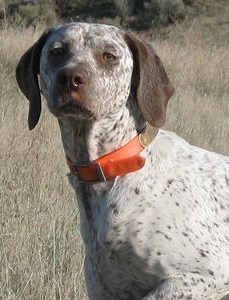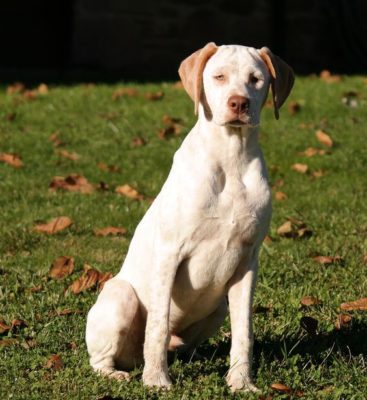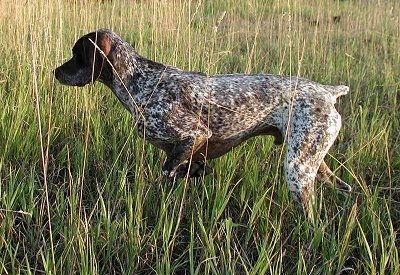Braque du Bourbonnais
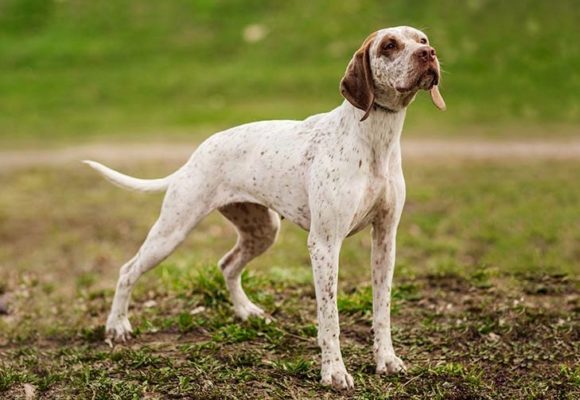
It is hardy, undemanding, but resentful and stubborn. The Braque du Bourbonnais has a unique sense of smell, which helps him to track his prey quietly and for a long time during the hunt. Due to its friendliness and politeness, it proved to be an excellent companion and a reliable pet.
Table of Contents
Breed Information
| Another Name | Bourbonnais Pointer, Bourbonnais Pointing Dog |
| Origin | France |
| Height | Males 51-57 cm Females 48-55 cm |
| Weight | 16-25 kg |
| Fur | Short |
| Color | Chestnut-feather, gray-feather, gray-beige-feather |
| Lifespan | 10-12 years |
| FCI Classification | Pointing Dogs |
| Group | Hunting dogs |
| Price | From $1000 |
Breed Photos
Origin History
The Braque du Bourbonnais is one of the oldest breeds in France. “Braque” from the French translates as to strive or point, and “Bourbonnais” is the name of the historical homeland where the breed became and developed. The discoverer is called Italian Aldovrandi, who studied the Braque du Bourbonnais and was engaged in its breeding and improvement. Even during the Renaissance, the breeder prepared an entire encyclopedia with illustrations and descriptions of the dogs, making them popular in Europe. The wars in the twentieth century and the Great French Revolution almost wiped out Bourbon Braccoons. A couple of individuals were saved from extinction, thanks to which breeders could resurrect the breed. In the XXI century, the Braque du Bourbonnais is considered the best in the Continental Legionnaires’ section and is extremely rare. The Braque du Bourbonnais is a unique breed, considered a small breed, known the world over for their hunting skills and beautiful colorful coat.
Appearance
The Braque du Bourbonnais is an exquisite dog breed. Its muscular body, distinctive coloration, and flowing body lines drive fans of the breed crazy. Pear-shaped head, triangular ears, taut belly, dry body, in general, create power and impressiveness. A distinctive feature of Braque du Bourbonnais is a bushy tail. Puppies are born with a shortened tail; if the tail is longer than prescribed in the standard, it is cut off. There are cases when puppies are born without a tail because this breed is also known as tailless leopards. In addition to the tail, the breed’s highlight is considered a fur and color of the breed. Wool is short, thin, and dense, on the head – soft and silky, on the back – a little denser and longer. Coloration is chestnut speckled with a lilac tint or gray-beige speckled on white background, spots of the same color as speckled are possible.
Character
It is hardy, undemanding, but resentful and stubborn. The Braque du Bourbonnais has a unique sense of smell, which helps him to track his prey quietly and for a long time during the hunt. Due to its friendliness and politeness, it proved to be an excellent companion and a reliable pet. He is diligent, wise, and extremely loyal, but at the same time, the Braque du Bourbonnais will not let you wipe your feet and will not bring slippers at short notice.
Care
Keeping a Braque du Bourbonnais is best in the countryside, for living in urban areas are not intended categorically. The unusual and colorful coat must be kept in constant cleanliness, combed out with a brush several times a week. Bathe as needed; in no case, do not wash the pet with human grooming products. Spend the money and buy quality grooming specifically for dogs. Ear, eye, and nail hygiene are mandatory once a week.
Training
Braque du Bourbonnais is self-assured and proud natures; the approach to training these dogs must be strict and consistent. Early socialization and regular activities are necessary for a dog to feel comfortable and live life to the fullest. It’s your job to release the pent-up energy of a leopard dog. Active hunting, physical activity, regular walks will help to live a carefree and happy dog life.
Common Diseases
Braque du Bourbonnais is rarely sick and is naturally in good health. Sometimes there is a common ailment of large active dogs – hip dysplasia. There may also be eye problems that require careful attention to the well-being of the four-legged helper. Another disease imminent for hard-working bourbons – stenosis of the pulmonary artery of the heart. You should not neglect timely vaccinations and periodic visits to the veterinarian.
Nutrition
Don’t forget that a dog’s caloric needs depend on its level of physical activity. A relaxing evening out with the family and a cross-country hunt require different nutrition amounts for the Braque du Bourbonnais. The dietary regimen should preferably be made up of protein foods. The main source is lean meat of different varieties; in the cold season, the diet’s fat component is increased by adding 15-30 g of animal fats to the dishes. A complete menu should also contain vegetables, cereals, and bread.
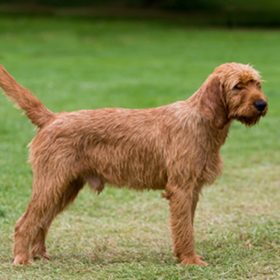 Griffon Fauve de Bretagne
Griffon Fauve de Bretagne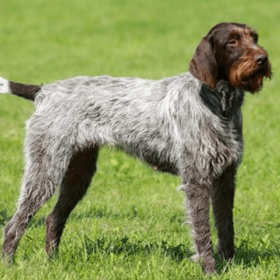 Český Fousek
Český Fousek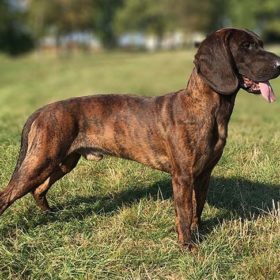 Hanover Hound
Hanover Hound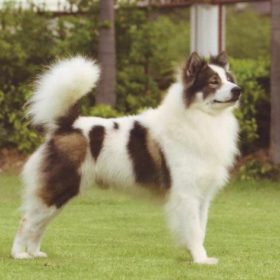 Thai Bangkaew Dog
Thai Bangkaew Dog Halden Hound
Halden Hound Posavac Hound
Posavac Hound